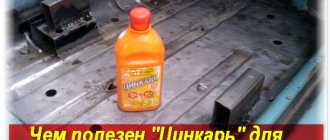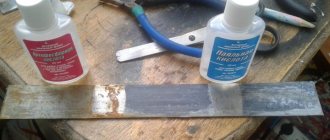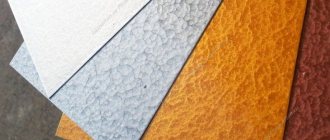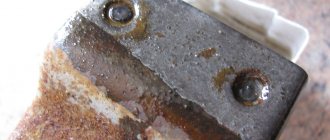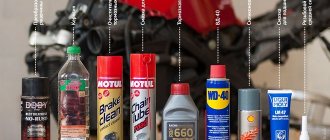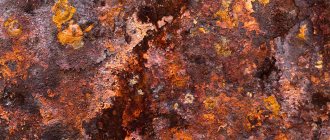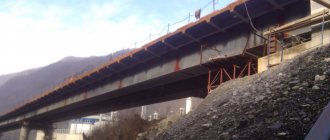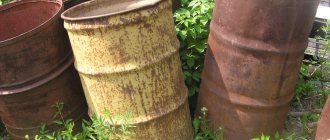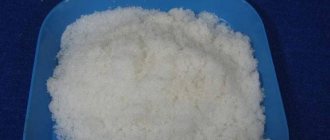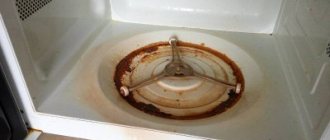One of the most common phenomena that a motorist may encounter is body corrosion. In order for the machine to be used for a long time, this problem must be corrected immediately. This article will tell you how to choose an effective rust converter and how to use it correctly.
Composition and principle of action
A rust converter means a special product consisting of special chemical compounds that, upon contact with corrosion products, trigger the process of converting them into a dense protective film covering the metal surface. For example, a common component of such a product is dissolved orthophosphoric acid. Some manufacturers replace the acid with a zinc salt. When the converter comes into contact with rust, a layer of zinc compounds is formed. It has long been a known and confirmed fact that galvanized steel is less susceptible to corrosion than ordinary metal.
This composition is available in three forms:
- solution;
- emulsion;
- suspension.
Due to the high density of contact with the surface and excellent protective properties, the rust converter is used before applying paintwork as an intermediate element.
The acid contained in the rust converter acts on iron oxides and converts them into orthophosphate salt. Other components of the composition also participate in the chemical process, thanks to which the layer formed on the surface is in a stable inactive state.
Rust converters containing zinc compounds act differently. Zinc atoms begin to bond with oxygen atoms and ultimately form a special film on the metal surface, which performs a protective function against the appearance and further formation of rust.
What does Tsinkar promise to do for your car?
A good rust converter fights the initial stages of corrosion, removes deep-seated damage to the body and preserves the metal that has not yet been affected by this unpleasant process. If you managed to notice the damage in time and also use a rust converter correctly, there is a real chance to significantly reduce damage and the risk of complete failure of body parts. On the manufacturer's packaging there are several promises and descriptions of the operating principle of Tsinkar:
- at its low price (about 100-150 rubles per 1 liter), the product received excellent reviews from specialists in many automotive services;
- the chemical acts exclusively on corrosion spots on the car body, there are no unpleasant effects;
- the instructions for use are quite simple, below we will explain how to use the product for good results;
- it is possible to reanimate old metal surfaces without replacing them with further partial welding;
- Tsinkar eats away damage from the deepest craters on the metal; with proper processing, not even traces of corrosion remain.
If the car can really be restored, then the reviews for this product should be enormous. But in reality there are also many negative opinions. Not everyone uses such a product correctly, and this can become a problem. And the cost of one bottle of the product turns out to be quite high. When working with such products, special attention should be paid to personal safety.
How to protect yourself from the influence of rust converter?
If you decide to treat your car with Zinkar, buy special rubber gloves with high protection and a guarantee of a weak chemical reaction. Chemical protection ensures that the rust converter will not corrode your skin. The activity of the product is very high, so it is better not to forget about personal protective equipment.
In addition, it is important to use goggles and a mask or an effective respirator to protect your respiratory system and vision. Otherwise, if the product gets into the eyes, the mucous membrane may be damaged. Inhaling the product is also not recommended; this can cause severe irritation of the respiratory tract and an unpredictable reaction of the body.
Do I need to wash off Tsinkar after application?
Before we begin to describe the use of rust converter on a car body, let's say that efficiency can only be high when washed off. To do this, use a soda solution with a high content of active ingredient. Otherwise, the metal under the resulting layer will rot even more readily.
The car must be treated correctly with Zinkar, otherwise the whole purpose of using this product will be destroyed. Never apply primer until the entire surface has been washed and dried. Otherwise, the rust converter will do the opposite and cause obvious trouble.
Application of the product
The initial - preparatory - stage consists of degreasing the damaged surface and cleaning it from dust and dirt. The following steps depend on the form in which the product is released. It should be carefully applied to areas of the body using a solvent or brush.
After no more than 15 minutes have passed and the rust has turned gray (turned into orthophosphate), you can wash off the remaining product. Then wait until the treated surface is completely dry and no water remains on it. Then apply a layer of primer on top, and then paint the metal. It is allowed to apply paint in three layers.
Be sure to read the instructions on the label. The correct application depends on what type of solvent you purchased. Some require the surface to be wet, others must be applied dry.
Important! If the rust is more than 0.1mm, it is not recommended to use the converter.
If you find that the layer is much thicker, it must be removed using a special grinding machine or sandpaper with a coarse texture.
Basic data
Metal parts of a car constantly suffer from corrosion that forms on them under the influence of excessive humidity. Over time, the rust that appears corrodes the parts so much that holes begin to form on them. As a result, the car performs worse and worse or stops starting altogether (if the power unit’s spare parts are damaged), forcing the owner to carry out expensive replacement of individual components. That is why protecting metal elements from corrosion is an extremely important task.
All currently existing methods of protecting metal from corrosion can be divided into two groups:
- Electrochemical protection. The metal is processed using galvanic steam and corresponding electrical impulses. Not used in its pure form. Requires mandatory additional conservation of the metal surface.
- Conservation methods of protection. A dense protective layer is created on the metal surface. For example, after using a paint coating.
How can I wash off the converter?
Before using any product, do not forget about the instructions, especially if it is a rust converter. There are products that do not need to be washed off, these include Cortamine F and Phosphamite.
But it is still necessary to remove most of the converters from the surface. As a rule, information on how to wash off the composition can be found on the label. Experienced motorists use silicone remover or white spirit for these purposes, and some prefer to use ordinary water.
Instructions for working with Zinkar - how to use a rust converter?
The use of such products must strictly comply with the manufacturer's requirements. If the instructions for use are unnecessary material for you, it is very difficult to get a good result. Even experienced bodybuilders who have never encountered Tsinkar carefully study the manufacturer’s requirements before using a rust converter. There are several requirements for working with a car:
- The area you are going to treat is simply cleaned by all means possible. Open holes and rot are removed mechanically.
- Next, the car body is cleaned using a metal brush and a grinder or drill. This will help achieve greater efficiency. But you shouldn’t be overzealous with this process.
- Only then is the required amount of rust converter applied to the surface. Judging by the reviews, the amount recommended by the manufacturer is optimal.
- You should also use a soda solution for rinsing when the product has already completed its task. After this, the body is dried, protection must be performed immediately.
- The protective layer is applied after welding, if necessary. Priming is carried out using various types and acidic primer compositions.
This instruction is quite simple, but it will make the processing process effective. The cost of working on a car will not be high, since you won’t need too much Tsinkar for pinpoint or even fairly large damage. Interestingly, reviews from professionals confirm the effectiveness of using a soda solution to wash off product residues from the body.
Types of product
Rust converters are available in different forms: spray, paste or liquid. Some car primers already contain this substance in their composition.
Some car paint manufacturers strongly advise against using converters before painting without consulting a specialist. The fact is that some paints have a number of features that are associated with their chemical composition.
Be sure to check the manufacturer's recommendations before using this product before painting your vehicle.
The most common rust converters include:
- primers with a modifier function - thanks to them, a base is formed that is necessary before painting;
- stabilizing compounds - unstable corrosion elements become stable upon contact with them;
- transformative - active rust products under their influence are converted into slightly soluble salts;
- penetration - corrosive products are compacted when treated with a similar composition.
Let's sum it up
The question of how to restore car body parts after corrosion damage is quite complicated. You can use various options for means, techniques and protection options. However, there are a number of difficulties in using professional methods - it is impossible to apply them in your own garage and do everything correctly. Rust converters help remove corrosion, but do not guarantee that the body will last a long time without problems. These materials are designed today and now to remove already damaged elements.
Next, you will have to treat the body to protect the exposed areas from further corrosion damage. Tsinkar is also not a panacea for all types of body diseases. It only removes rust well and copes well with large damages. Otherwise, it is a fairly simple product with high chemical activity. If used incorrectly, negative consequences are quite possible.
Benefits of use
The main advantage of Tsinkar auto chemical products is the price. On average, the cost of one bottle varies between 200–250 rubles. In addition, the product is easily distributed even over hard-to-reach surfaces, which, in turn, allows you to save quite a lot of time on dismantling parts that need to be cleaned of rust.
Starting in 2006, when a series of tests was completed, the Tsinkar converter received a new bottle with a spray. Despite the fact that the color scheme of the bottle has not changed, remaining yellow-orange, its shape, according to consumers, has become more comfortable to hold in the hand.
How to avoid possible failures
It happens that after using the product, rust appears again. Most often, the fault is non-compliance with the technology, which is described in detail in the instructions. For example, a spray from a can may flow unevenly if you hold it at a distance of less than or more than 15-20 cm from the surface. Some people forget to shake the solution before use, which can cause it to separate. When applying, the brush must be pressed firmly against the base so that the treatment is more thorough and there are no unpainted areas left.
